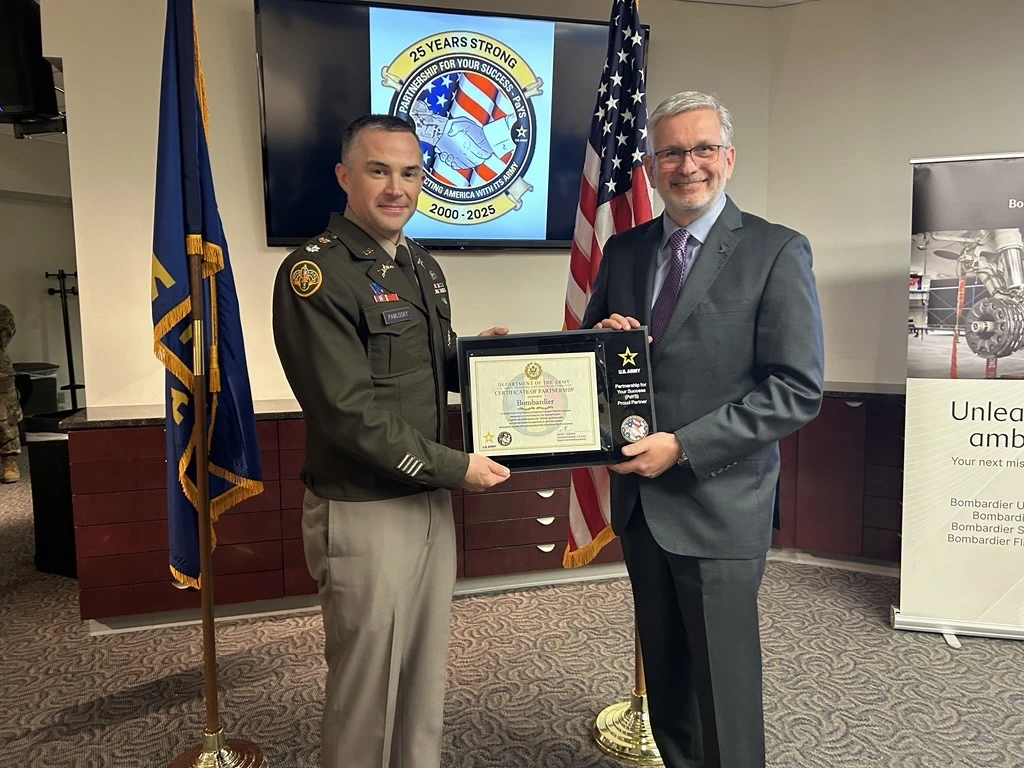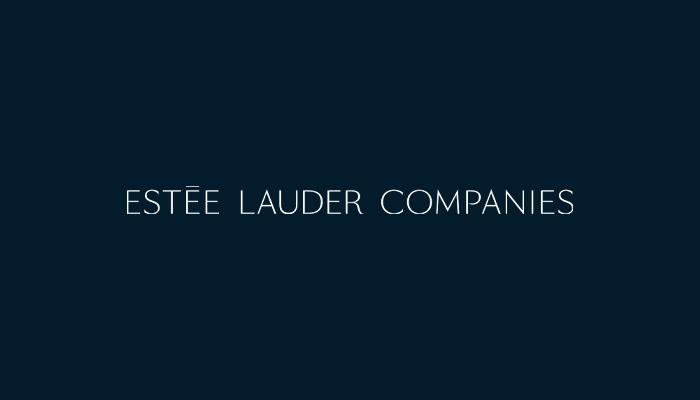Horsham, PA., November 6, 2025 – Johnson & Johnson (NYSE:JNJ) today announced the U.S. Food and Drug Administration (FDA) approved DARZALEX FASPRO® (daratumumab and hyaluronidase-fihj) as a single agent treatment for adult patients with high-risk smoldering multiple myeloma (HR-SMM).1 DARZALEX FASPRO® is the first and only approved treatment for HR-SMM, enabling earlier intervention before the disease progresses to active multiple myeloma.
FDA approval is based on findings from the AQUILA study (
NCT03301220), which evaluated the efficacy and safety of DARZALEX FASPRO® compared to active monitoring (or “Watch and Wait”) in the largest Phase 3 trial in patients with HR-SMM. The AQUILA study demonstrated a significant improvement in the primary endpoint of progression-free survival (PFS), with DARZALEX FASPRO® reducing the risk of disease progression to active multiple myeloma or death by 51 percent compared to active monitoring, according to the International Myeloma Working Group (IMWG) diagnostic criteria for multiple myeloma. Today’s milestone follows the
May 2025 vote by the U.S. FDA Oncologic Drugs Advisory Committee (ODAC) in favor of the benefit-risk profile of DARZALEX FASPRO® as a single agent treatment for patients with HR-SMM.
Smoldering multiple myeloma (SMM) is an asymptomatic malignancy that is genomically the same as active multiple myeloma and where these abnormal cells can be detected in the bone marrow.2,3,4 In 2025, it is estimated that more than 36,000 people will be diagnosed with multiple myeloma in the U.S., and approximately 15 percent of those are classified as smoldering.5,6 An estimated 50 percent of patients diagnosed with HR-SMM are likely to progress to active disease within two years of diagnosis.6 Currently, the standard of care for HR-SMM is active monitoring to track signs of biochemical progression and/or end-organ damage. Recent evidence suggests that people at high-risk of progressing to active multiple myeloma could benefit from earlier therapeutic intervention.6
“Until now, patients diagnosed with smoldering multiple myeloma only have the option to watch and wait for any active signs of progression to active disease,” said Peter Voorhees, M.D., Atrium Health/Levine Cancer Institute, Charlotte, N.C.* “Results from AQUILA demonstrated DARZALEX FASPRO significantly delayed disease progression, underscoring the role of early disease intervention for patients with high-risk smoldering multiple myeloma.”
The Phase 3 AQUILA study showed after a median follow-up of 65.2 months, 63.1 percent of patients who received DARZALEX FASPRO® had not progressed to active myeloma at 5 years (60 months) versus 40.7 percent in the active monitoring group (hazard ratio [HR], 0.49; 95 percent confidence interval [CI], 0.36-0.67; P<0.001). Today, most physicians use the Mayo 2018 criteria (20/2/20) to assess risk status in patients with smoldering myeloma. In a post hoc analysis of AQUILA, 41 percent of patients met the Mayo 2018 HR-SMM classification. Among these patients, median PFS was not reached in the DARZALEX FASPRO® arm and was 22.1 months in the active monitoring arm (HR, 0.36; 95 percent CI, 0.23-0.58).1
Beyond the primary endpoint of PFS, patients in AQUILA who received DARZALEX FASPRO® saw a higher response rate of 63.4 percent compared to 2.0 percent with active monitoring (P<0.001). The median time to patients receiving first-line multiple myeloma treatment was delayed for patients receiving DARZALEX FASPRO® compared to active monitoring, with median time to first treatment NR vs 50.2 months for the active monitoring group (HR, 0.46; 95 percent CI, 0.33-0.62).1
“DARZALEX FASPRO is a foundational therapy in multiple myeloma and illustrates our commitment to improve outcomes for patients at every stage of their disease,” said Jordan Schecter, M.D., Vice President, Research & Development, Multiple Myeloma, Oncology, Johnson & Johnson Innovative Medicine. “Data from the AQUILA study reinforce the significant impact DARZALEX FASPRO continues to have for patients. With today’s approval, patients with HR-SMM will now be able to receive this treatment before they progress to active multiple myeloma, giving us the opportunity to shift the treatment paradigm and bring hope to people who are impacted by this disease.”
Adverse reactions observed in the pivotal AQUILA study were generally consistent with previous DARZALEX FASPRO® studies. The most common adverse reactions (≥20%) in patients with HR-SMM who received DARZALEX FASPRO® monotherapy are upper respiratory tract infection, musculoskeletal pain, fatigue, diarrhea, rash, sleep disorder, sensory neuropathy, and injection site reactions.1
Results from AQUILA were first
presented at the 2024 American Society of Hematology (ASH) Annual Meeting and simultaneously published in
The New England Journal of Medicine. A subgroup analysis from the AQUILA study, evaluating the efficacy and safety of DARZALEX FASPRO® monotherapy in patients with HR-SMM using IMWG 2020 and IMWG 2020 plus cytogenetic risk models, will be
presented at the 2025 ASH Annual Meeting in Orlando from December 6-9.
About the AQUILA Study
AQUILA (
NCT03301220) is a randomized, multicenter Phase 3 study comparing treatment with DARZALEX FASPRO® to active monitoring in patients with SMM. Patients received single agent DARZALEX FASPRO® as a fixed-duration treatment for up to 36 months. The primary endpoint is progression-free survival (PFS), defined as progression to active multiple myeloma (MM) as assessed by an independent review committee, according to IMWG diagnostic criteria for MM (SLiM-CRAB), or death. Major secondary endpoints included overall response rate, PFS on first-line MM treatment (PFS2), and overall survival. Forty-one percent of patients had 2 or more of the following criteria for high-risk smoldering multiple myeloma: serum monoclonal protein level >2 g/dL, involved-to-uninvolved serum-free light chain ratio >20, and bone marrow plasma cells >20%. DARZALEX FASPRO® is only indicated for patients with high-risk smoldering multiple myeloma and is not indicated for other risk categories.
About Multiple Myeloma
Multiple myeloma is a blood cancer that affects a type of white blood cell called plasma cells, which are found in the bone marrow.7 In multiple myeloma, these malignant plasma cells proliferate and replace normal cells in the bone marrow.8 Multiple myeloma is the second most common blood cancer worldwide and remains an incurable disease.9 In 2025, it is estimated that more than 36,000 people will be diagnosed with multiple myeloma in the U.S. and more than 12,000 will die from the disease.5 People with multiple myeloma have a 5-year survival rate of 59.8 percent.10 While some people diagnosed with multiple myeloma initially have no symptoms, most patients are diagnosed due to symptoms that can include bone fracture or pain, low red blood cell counts, tiredness, high calcium levels, kidney problems or infections.2,10
About Smoldering Multiple Myeloma
Smoldering multiple myeloma (SMM) is an asymptomatic precursor disease state of multiple myeloma where abnormal cells can be detected in the bone marrow.11 People living with SMM do not show signs or symptoms typically associated with active myeloma, such as bone pain, bone fractures, kidney problems, or anemia. However, as abnormal plasma cells are present, organ damage may begin and progress asymptomatically.4,6 Approximately fifteen percent of all cases are classified as SMM, and half of those diagnosed with high-risk SMM are estimated to progress to active multiple myeloma within two years.6
About DARZALEX FASPRO® and DARZALEX®
DARZALEX FASPRO® (daratumumab and hyaluronidase-fihj)
received U.S. FDA approval in May 2020 and is approved for ten indications in multiple myeloma, four of which are for frontline treatment in newly diagnosed patients who are transplant eligible or ineligible.1 It is the only subcutaneous CD38-directed antibody approved to treat patients with multiple myeloma. DARZALEX FASPRO® is co-formulated with recombinant human hyaluronidase PH20 (rHuPH20), Halozyme’s ENHANZE® drug delivery technology.
DARZALEX® (daratumumab) received
U.S. FDA approval in November 2015 and is approved in eight indications, three of which are in the frontline setting, including newly diagnosed patients who are transplant-eligible and ineligible.12
DARZALEX® is the first CD38-directed antibody approved to treat multiple myeloma.12 DARZALEX®-based regimens have been used in the treatment of more than 618,000 patients worldwide and more than 68,000 patients in the U.S. alone.
In
August 2012, Janssen Biotech, Inc. and Genmab A/S entered a worldwide agreement, which granted Janssen an exclusive license to develop, manufacture and commercialize daratumumab
For more information, visit
www.DARZALEX.com.
DARZALEX FASPRO® INDICATIONS AND IMPORTANT SAFETY INFORMATION
INDICATIONS
DARZALEX FASPRO® (daratumumab and hyaluronidase-fihj) is indicated for the treatment of adult patients with multiple myeloma:
- In combination with bortezomib, lenalidomide, and dexamethasone for induction and consolidation in newly diagnosed patients who are eligible for autologous stem cell transplant
- In combination with bortezomib, melphalan, and prednisone in newly diagnosed patients who are ineligible for autologous stem cell transplant
- In combination with lenalidomide and dexamethasone in newly diagnosed patients who are ineligible for autologous stem cell transplant and in patients with relapsed or refractory multiple myeloma who have received at least one prior therapy
- In combination with bortezomib, thalidomide, and dexamethasone in newly diagnosed patients who are eligible for autologous stem cell transplant
- In combination with pomalidomide and dexamethasone in patients who have received at least one prior line of therapy including lenalidomide and a proteasome inhibitor (PI)
- In combination with carfilzomib and dexamethasone in patients with relapsed or refractory multiple myeloma who have received one to three prior lines of therapy
- In combination with bortezomib and dexamethasone in patients who have received at least one prior therapy
- As monotherapy in patients who have received at least three prior lines of therapy including a PI and an immunomodulatory agent or who are double refractory to a PI and an immunomodulatory agent
DARZALEX FASPRO® as monotherapy is indicated for the treatment of adult patients with high-risk smoldering multiple myeloma.
IMPORTANT SAFETY INFORMATION
CONTRAINDICATIONS
DARZALEX FASPRO® is contraindicated in patients with a history of severe hypersensitivity to daratumumab, hyaluronidase, or any of the components of the formulation.
WARNINGS AND PRECAUTIONS
Hypersensitivity and Other Administration Reactions
Both systemic administration-related reactions, including severe or life-threatening reactions, and local injection-site reactions can occur with DARZALEX FASPRO®. Fatal reactions have been reported with daratumumab-containing products, including DARZALEX FASPRO®.
Systemic Reactions
In a pooled safety population of 1446 patients with multiple myeloma (N=1235) or light chain (AL) amyloidosis (N=193) who received DARZALEX FASPRO® as monotherapy or in combination, 7% of patients experienced a systemic administration-related reaction (Grade 2: 3%, Grade 3: 0.8%, Grade 4: 0.1%).In patients with high-risk smoldering multiple myeloma (N=193), systemic administration-related reactions occurred in 17% of patients in AQUILA (Grade 2: 7%, Grade 3: 1%).
In all patients (N=1639), systemic administration-related reactions occurred in 7% of patients with the first injection, 0.5% with the second injection, and cumulatively 1% with subsequent injections. The median time to onset was 3.2 hours (range: 4 minutes to 3.5 days). Of the 283 systemic administration-related reactions that occurred in 135 patients, 240 (85%) occurred on the day of DARZALEX FASPRO® administration. Delayed systemic administration-related reactions have occurred in 1% of the patients.
Severe reactions included hypoxia, dyspnea, hypertension, tachycardia, and ocular adverse reactions, including choroidal effusion, acute myopia, and acute angle closure glaucoma. Other signs and symptoms of systemic administration-related reactions may include respiratory symptoms, such as bronchospasm, nasal congestion, cough, throat irritation, allergic rhinitis, and wheezing, as well as anaphylactic reaction, pyrexia, chest pain, pruritus, chills, vomiting, nausea, hypotension, and blurred vision.
Pre-medicate patients with histamine-1 receptor antagonist, acetaminophen, and corticosteroids. Monitor patients for systemic administration-related reactions, especially following the first and second injections. For anaphylactic reaction or life-threatening (Grade 4) administration-related reactions, immediately and permanently discontinue DARZALEX FASPRO®. Consider administering corticosteroids and other medications after the administration of DARZALEX FASPRO® depending on dosing regimen and medical history to minimize the risk of delayed (defined as occurring the day after administration) systemic administration-related reactions.
Ocular adverse reactions, including acute myopia and narrowing of the anterior chamber angle due to ciliochoroidal effusions with potential for increased intraocular pressure or glaucoma, have occurred with daratumumab-containing products. If ocular symptoms occur, interrupt DARZALEX FASPRO® and seek immediate ophthalmologic evaluation prior to restarting DARZALEX FASPRO®.
Local Reactions
In this pooled safety population of 1446 patients with multiple myeloma (N=1253) or light chain amyloidosis (N=193), injection-site reactions occurred in 8% of patients, including Grade 2 reactions in 1.1%. The most frequent (>1%) injection-site reaction were injection site erythema and injection site rash. In patients with high-risk smoldering multiple myeloma (N=193), injection-site reactions occurred in 28% of patients, including Grade 2 reactions in 3%. These local reactions occurred a median of 6 minutes (range: 0 minutes to 6.5 days) after starting administration of DARZALEX FASPRO®. Monitor for local reactions and consider symptomatic management.
Infections
DARZALEX FASPRO® can cause serious, life-threatening, or fatal infections. In patients who received DARZALEX FASPRO® in a pooled safety population including patients with smoldering multiple myeloma and light chain (AL) amyloidosis (N=1639), serious infections, including opportunistic infections, occurred in 24% of patients, Grade 3 or 4 infections occurred in 22%, and fatal infections occurred in 2.5%. The most common type of serious infection reported was pneumonia (8.5%).
Monitor patients for signs and symptoms of infection prior to and during treatment with DARZALEX FASPRO® and treat appropriately. Administer prophylactic antimicrobials according to guidelines.
Neutropenia
Daratumumab may increase neutropenia induced by background therapy. Monitor complete blood cell counts periodically during treatment according to manufacturer’s prescribing information for background therapies. Monitor patients with neutropenia for signs of infection. Consider withholding DARZALEX FASPRO® until recovery of neutrophils. In lower body weight patients receiving DARZALEX FASPRO®, higher rates of Grade 3-4 neutropenia were observed.
Thrombocytopenia
Daratumumab may increase thrombocytopenia induced by background therapy. Monitor complete blood cell counts periodically during treatment according to manufacturer’s prescribing information for background therapies. Consider withholding DARZALEX FASPRO® until recovery of platelets.
Embryo-Fetal Toxicity
Based on the mechanism of action, DARZALEX FASPRO® can cause fetal harm when administered to a pregnant woman. DARZALEX FASPRO® may cause depletion of fetal immune cells and decreased bone density. Advise pregnant women of the potential risk to a fetus. Advise females with reproductive potential to use effective contraception during treatment with DARZALEX FASPRO® and for 3 months after the last dose.
The combination of DARZALEX FASPRO® with lenalidomide, thalidomide, or pomalidomide is contraindicated in pregnant women because lenalidomide, thalidomide, and pomalidomide may cause birth defects and death of the unborn child. Refer to the lenalidomide, thalidomide, or pomalidomide prescribing information on use during pregnancy.
Interference With Serological Testing
Daratumumab binds to CD38 on red blood cells (RBCs) and results in a positive indirect antiglobulin test (indirect Coombs test). Daratumumab-mediated positive indirect antiglobulin test may persist for up to 6 months after the last daratumumab administration. Daratumumab bound to RBCs masks detection of antibodies to minor antigens in the patient’s serum. The determination of a patient’s ABO and Rh blood type are not impacted.
Notify blood transfusion centers of this interference with serological testing and inform blood banks that a patient has received DARZALEX FASPRO®. Type and screen patients prior to starting DARZALEX FASPRO®.
Interference With Determination of Complete Response
Daratumumab is a human immunoglobulin G (IgG) kappa monoclonal antibody that can be detected on both the serum protein electrophoresis (SPE) and immunofixation (IFE) assays used for the clinical monitoring of endogenous M-protein. This interference can impact the determination of complete response and of disease progression in some DARZALEX FASPRO®-treated patients with IgG kappa myeloma protein.
ADVERSE REACTIONS
In multiple myeloma, the most common adverse reaction (≥20%) with DARZALEX FASPRO® monotherapy is upper respiratory tract infection. The most common adverse reactions with combination therapy (≥20% for any combination) include fatigue, nausea, diarrhea, dyspnea, insomnia, headache, rash, pyrexia, cough, muscle spasms, back pain, vomiting, hypertension, musculoskeletal pain, upper respiratory tract infection, peripheral neuropathy, peripheral sensory neuropathy, constipation, pneumonia, edema, peripheral edema, and anemia.
The most common adverse reactions (≥20%) in patients with high-risk smoldering multiple myeloma who received DARZALEX FASPRO® monotherapy are upper respiratory tract infection, musculoskeletal pain, fatigue, diarrhea, rash, sleep disorder, sensory neuropathy, and injection site reactions.
The most common hematology laboratory abnormalities (≥40%) with DARZALEX FASPRO® are decreased leukocytes, decreased lymphocytes, decreased neutrophils, decreased platelets, and decreased hemoglobin.
Please
click here to read the full Prescribing Information for DARZALEX FASPRO®.
DARZALEX® INDICATIONS AND IMPORTANT SAFETY INFORMATION
INDICATIONS
DARZALEX® (daratumumab) is indicated for the treatment of adult patients with multiple myeloma:
- In combination with bortezomib, melphalan, and prednisone in newly diagnosed patients who are ineligible for autologous stem cell transplant
- In combination with lenalidomide and dexamethasone in newly diagnosed patients who are ineligible for autologous stem cell transplant and in patients with relapsed or refractory multiple myeloma who have received at least one prior therapy
- In combination with bortezomib, thalidomide, and dexamethasone in newly diagnosed patients who are eligible for autologous stem cell transplant
- In combination with pomalidomide and dexamethasone in patients who have received at least one prior line of therapy including lenalidomide and a proteasome inhibitor
- In combination with carfilzomib and dexamethasone in patients with relapsed or refractory multiple myeloma who have received one to three prior lines of therapy
- In combination with bortezomib and dexamethasone in patients who have received at least one prior therapy
- As monotherapy in patients who have received at least three prior lines of therapy including a proteasome inhibitor (PI) and an immunomodulatory agent or who are double-refractory to a PI and an immunomodulatory agent
CONTRAINDICATIONS
DARZALEX® is contraindicated in patients with a history of severe hypersensitivity (eg, anaphylactic reactions) to daratumumab or any of the components of the formulation.
WARNINGS AND PRECAUTIONS
Infusion-Related Reactions
DARZALEX® can cause severe and/or serious infusion-related reactions including anaphylactic reactions. These reactions can be life threatening, and fatal outcomes have been reported. In clinical trials (monotherapy and combination: N=2066), infusion-related reactions occurred in 37% of patients with the Week 1 (16 mg/kg) infusion, 2% with the Week 2 infusion, and cumulatively 6% with subsequent infusions. Less than 1% of patients had a Grade 3/4 infusion-related reaction at Week 2 or subsequent infusions. The median time to onset was 1.5 hours (range: 0 to 73 hours). Nearly all reactions occurred during infusion or within 4 hours of completing DARZALEX®. Severe reactions have occurred, including bronchospasm, hypoxia, dyspnea, hypertension, tachycardia, headache, laryngeal edema, pulmonary edema, and ocular adverse reactions, including choroidal effusion, acute myopia, and acute angle closure glaucoma. Signs and symptoms may include respiratory symptoms, such as nasal congestion, cough, throat irritation, as well as chills, vomiting, and nausea. Less common signs and symptoms were wheezing, allergic rhinitis, pyrexia, chest discomfort, pruritus, hypotension and blurred vision.
When DARZALEX® dosing was interrupted in the setting of ASCT (CASSIOPEIA) for a median of 3.75 months (range: 2.4 to 6.9 months), upon re-initiation of DARZALEX®, the incidence of infusion-related reactions was 11% for the first infusion following ASCT. Infusion-related reactions occurring at re-initiation of DARZALEX® following ASCT were consistent in terms of symptoms and severity (Grade 3 or 4: <1%) with those reported in previous studies at Week 2 or subsequent infusions. In EQUULEUS, patients receiving combination treatment (n=97) were administered the first 16 mg/kg dose at Week 1 split over two days, ie, 8 mg/kg on Day 1 and Day 2, respectively. The incidence of any grade infusion-related reactions was 42%, with 36% of patients experiencing infusion-related reactions on Day 1 of Week 1, 4% on Day 2 of Week 1, and 8% with subsequent infusions.
Pre-medicate patients with antihistamines, antipyretics, and corticosteroids. Frequently monitor patients during the entire infusion. Interrupt DARZALEX® infusion for reactions of any severity and institute medical management as needed. Permanently discontinue DARZALEX® therapy if an anaphylactic reaction or life-threatening (Grade 4) reaction occurs and institute appropriate emergency care. For patients with Grade 1, 2, or 3 reactions, reduce the infusion rate when re-starting the infusion.
To reduce the risk of delayed infusion-related reactions, administer oral corticosteroids to all patients following DARZALEX® infusions. Patients with a history of chronic obstructive pulmonary disease may require additional post-infusion medications to manage respiratory complications. Consider prescribing short- and long-acting bronchodilators and inhaled corticosteroids for patients with chronic obstructive pulmonary disease.
Ocular adverse reactions, including acute myopia and narrowing of the anterior chamber angle due to ciliochoroidal effusions with potential for increased intraocular pressure or glaucoma, have occurred with DARZALEX® infusion. If ocular symptoms occur, interrupt DARZALEX® infusion and seek immediate ophthalmologic evaluation prior to restarting DARZALEX®.
Interference With Serological Testing
Daratumumab binds to CD38 on red blood cells (RBCs) and results in a positive indirect antiglobulin test (indirect Coombs test). Daratumumab-mediated positive indirect antiglobulin test may persist for up to 6 months after the last daratumumab infusion. Daratumumab bound to RBCs masks detection of antibodies to minor antigens in the patient’s serum. The determination of a patient’s ABO and Rh blood type is not impacted. Notify blood transfusion centers of this interference with serological testing and inform blood banks that a patient has received DARZALEX®. Type and screen patients prior to starting DARZALEX®.
Neutropenia and Thrombocytopenia
DARZALEX® may increase neutropenia and thrombocytopenia induced by background therapy. Monitor complete blood cell counts periodically during treatment according to manufacturer’s prescribing information for background therapies. Monitor patients with neutropenia for signs of infection. Consider withholding DARZALEX® until recovery of neutrophils or for recovery of platelets.
Interference With Determination of Complete Response
Daratumumab is a human immunoglobulin G (IgG) kappa monoclonal antibody that can be detected on both the serum protein electrophoresis (SPE) and immunofixation (IFE) assays used for the clinical monitoring of endogenous M-protein. This interference can impact the determination of complete response and of disease progression in some patients with IgG kappa myeloma protein.
Embryo-Fetal Toxicity
Based on the mechanism of action, DARZALEX® can cause fetal harm when administered to a pregnant woman. DARZALEX® may cause depletion of fetal immune cells and decreased bone density. Advise pregnant women of the potential risk to a fetus. Advise females with reproductive potential to use effective contraception during treatment with DARZALEX® and for 3 months after the last dose.
The combination of DARZALEX® with lenalidomide, pomalidomide, or thalidomide is contraindicated in pregnant women because lenalidomide, pomalidomide, and thalidomide may cause birth defects and death of the unborn child. Refer to the lenalidomide, pomalidomide, or thalidomide prescribing information on use during pregnancy.
ADVERSE REACTIONS
The most frequently reported adverse reactions (incidence ≥20%) were: upper respiratory infection, neutropenia, infusion related reactions, thrombocytopenia, diarrhea, constipation, anemia, peripheral sensory neuropathy, fatigue, peripheral edema, nausea, cough, pyrexia, dyspnea, and asthenia. The most common hematologic laboratory abnormalities (≥40%) with DARZALEX® are: neutropenia, lymphopenia, thrombocytopenia, leukopenia, and anemia.
Please
click here to read the full Prescribing Information for DARZALEX®.
About Johnson & Johnson
At Johnson & Johnson, we believe health is everything. Our strength in healthcare innovation empowers us to build a world where complex diseases are prevented, treated, and cured, where treatments are smarter and less invasive, and solutions are personal. Through our expertise in Innovative Medicine and MedTech, we are uniquely positioned to innovate across the full spectrum of healthcare solutions today to deliver the breakthroughs of tomorrow and profoundly impact health for humanity.
Learn more at
https://www.jnj.com/ or at
www.innovativemedicine.jnj.com.
Janssen Research & Development, LLC and Janssen Biotech, Inc. are both Johnson & Johnson companies.
Cautions Concerning Forward-Looking Statements
This press release contains “forward-looking statements” as defined in the Private Securities Litigation Reform Act of 1995 regarding product development and the potential benefits and treatment impact of DARZALEX FASPRO® (daratumumab and hyaluronidase-fihj). The reader is cautioned not to rely on these forward-looking statements. These statements are based on current expectations of future events. If underlying assumptions prove inaccurate or known or unknown risks or uncertainties materialize, actual results could vary materially from the expectations and projections of Johnson & Johnson. Risks and uncertainties include, but are not limited to: challenges and uncertainties inherent in product research and development, including the uncertainty of clinical success and of obtaining regulatory approvals; uncertainty of commercial success; manufacturing difficulties and delays; competition, including technological advances, new products and patents attained by competitors; challenges to patents; product efficacy or safety concerns resulting in product recalls or regulatory action; changes in behavior and spending patterns of purchasers of health care products and services; changes to applicable laws and regulations, including global health care reforms; and trends toward health care cost containment. A further list and descriptions of these risks, uncertainties and other factors can be found in Johnson & Johnson’s most recent Annual Report on Form 10-K, including in the sections captioned “Cautionary Note Regarding Forward-Looking Statements” and “Item 1A. Risk Factors,” and in Johnson & Johnson’s subsequent Quarterly Reports on Form 10-Q and other filings with the Securities and Exchange Commission. Copies of these filings are available online at www.sec.gov, www.jnj.com or on request from Johnson & Johnson. Johnson & Johnson does not undertake to update any forward-looking statement as a result of new information or future events or developments.
Footnotes
* Peter Voorhees, M.D., Atrium Health/Levine Cancer Institute, Charlotte, N.C., has provided consulting, advisory, and speaking services to Johnson & Johnson; he has not been paid for any media work.
1 DARZALEX FASPRO® U.S. Prescribing Information
2 American Cancer Society. What is Multiple Myeloma? Accessed November 2025. Available at: https://www.cancer.org/cancer/multiple-myeloma/about/what-is-multiple-myeloma.html
3 Oben, B, Froyen, G, Maclachlan, K.H, et al. Whole-genome sequencing reveals progressive versus stable myeloma precursor conditions as two distinct entities. Nat Commun 2021;12(1861). doi:10.1038/s41467-021-22140-0
4 Maura, F, Bergsagel PL. Targeting the Tumor and the Immune System in Smoldering Multiple Myeloma. N Engl J Med. 2025;392:1858-1860. doi: 10.1056/NEJMe2504273
5 American Cancer Society. Myeloma Cancer Statistics. Accessed November 2025. Available at: https://www.cancer.org/cancer/types/multiple-myeloma/about/key-statistics.html
6 M.A. Dimopoulos, et al. Phase 3 Randomized Study of Daratumumab Monotherapy Versus Active Monitoring in Patients With High-risk Smoldering Multiple Myeloma: Primary Results of the AQUILA Study. Presented at the December 2024 ASH Annual Meeting & Exposition. Abstract JJD-78127.
7 Rajkumar SV. Multiple Myeloma: 2020 Update on Diagnosis, Risk-Stratification and Management. Am J Hematol. 2020;95(5):548-5672020;95(5):548-567. http://www.ncbi.nlm.nih.gov/pubmed/32212178
8 National Cancer Institute. Plasma Cell Neoplasms. Accessed November 2025. Available at: https://www.cancer.gov/types/myeloma/patient/myeloma-treatment-pdq
9 Multiple Myeloma. City of Hope, 2022. Multiple Myeloma: Causes, Symptoms & Treatments. Accessed November 2025. Available at: https://www.cancercenter.com/cancer-types/multiple-myeloma
10 American Cancer Society. Multiple Myeloma Early Detection, Diagnosis, and Staging. Accessed November 2025. Available at: https://www.cancer.org/cancer/types/multiple-myeloma/detection-diagnosis-staging/detection.html
11 WebMD. Smoldering Multiple Myeloma. Accessed November 2025. Available at: https://www.webmd.com/cancer/multiple-myeloma/smoldering-multiple-myeloma
12 DARZALEX® U.S. Prescribing Information










